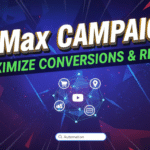What if I told you that most advertisers spend 70% of their budget on the wrong google ads keywords?
It sounds harsh, but it’s true.
Choosing the right Google Ads keywords is the difference between scaling profitably… or watching your ad spend vanish with nothing to show for it.
In this guide, I’ll break down the keyword process step by step—from research, to selection, to optimization—so you can cut wasted spend and double down on what works.
What Are Google Ads Keywords?
Google Ads keywords are the words and phrases you bid on so your ads show up when people search. Pretty simple, right?
But here’s the catch: not all keywords are created equal.
Some keywords bring you high-intent traffic that converts. Others just burn your budget because they attract the wrong audience.
So how do you know the difference? That’s what we’re here to figure out.
Why Keywords Matter in Google Ads
Let’s get straight to the point.
Keywords decide:
- Who sees your ad.
- How much you pay for that click.
- Whether that click becomes a sale or not.
Without the right keywords, you’re essentially shouting into the void. With the right ones, you’re tapping into existing demand at the exact moment someone’s ready to buy.
That’s why mastering Google Ads keywords is non-negotiable if you want profitable campaigns.
Step 1: Finding Google Ads Keywords
Think of keyword research as detective work. You’re uncovering what your audience is already searching for.
Tools to Use
- Google Keyword Planner – free, reliable, and straight from Google.
- SEMrush or Ahrefs – paid tools, but great for competitive insights.
- Google Search Suggestions & People Also Ask – underrated goldmines.
Tactics That Work
- Start broad with your product/service.
- Look at modifiers like “best,” “near me,” “cheap,” “buy,” “review.”
- Spy on competitors—what keywords are they bidding on?
Example: If you sell fitness equipment, don’t just target “treadmill.” Explore variations like “best treadmill for apartments” or “buy treadmill online.”
Notice how intent changes with just a few words?
Step 2: Selecting the Right Keywords
Not every keyword you find deserves a spot in your campaign. This is where filtering comes in.
Match Type Matters
- Broad match: Casts the widest net. Risky but can work with automation.
- Phrase match: Middle ground—more control, still flexible.
- Exact match: Tightest targeting. Usually higher intent.
Filter by Metrics
Ask yourself:
- Is search volume high enough?
- Is competition manageable?
- Does the keyword align with my offer?
If the answer is no, cut it.
Pro tip: High volume doesn’t always mean high ROI. Sometimes the lower-volume, niche terms are where the profits are hiding.
Step 3: Organizing Keywords into Ad Groups
Here’s where most campaigns go wrong.
Throwing all your keywords into one ad group is like mixing sports, food, and travel in a single blog post. The message won’t resonate.
Instead:
- Group keywords by theme or intent.
- Write ad copy that mirrors those keywords.
- Send traffic to the most relevant landing page.
Example:
- Ad Group 1: “buy treadmill online,” “cheap treadmill,” “treadmill sale.”
- Ad Group 2: “best treadmill for home,” “apartment treadmill,” “quiet treadmill.”
See the difference? Each group has a specific focus.
Step 4: Optimizing Google Ads Keywords
Finding and selecting is just the start. Real results come from ongoing optimization.
Add Negative Keywords
This step alone can save thousands. Negative keywords prevent your ads from showing on irrelevant searches.
If you’re selling “luxury watches,” you don’t want clicks from “free watch download.” (Yes, people search for that.)
Monitor CTR & Conversion Rates
- High impressions + low CTR = your ad copy doesn’t align with the keyword.
- High clicks + no conversions = wrong keyword intent.
Bid Adjustments for Google Ads Keywords
Raise bids on profitable keywords. Lower or pause the ones eating your budget.
Google Ads isn’t “set and forget.” It’s more like gardening—you plant, prune, and nurture regularly.
Step 5: Scaling with Smart Insights
Once you’ve got winning keywords, scaling becomes straightforward.
- Use Search Term Reports to find new keyword opportunities.
- Expand into long-tail variations.
- Test Dynamic Search Ads (DSA) to discover untapped queries.
Remember: scaling isn’t about adding more keywords blindly. It’s about doubling down on what’s already proven to work.
Common Mistakes to Avoid
Even experienced advertisers slip up here. Watch out for:
- Relying only on broad match.
- Ignoring negative keywords.
- Not splitting ad groups by intent.
- Focusing only on high-volume keywords.
These mistakes don’t just waste money—they stall growth.
Final Thoughts
Google Ads keywords aren’t just about traffic—they’re about relevance, intent, and ROI.
If you take the time to:
- Research thoroughly,
- Select wisely,
- Organize logically,
- Optimize relentlessly,
…you’ll turn your campaigns from “money drain” to “scalable profit machine.”
So, what’s your next step?
Are you going to keep guessing… or start building a keyword strategy that works?


